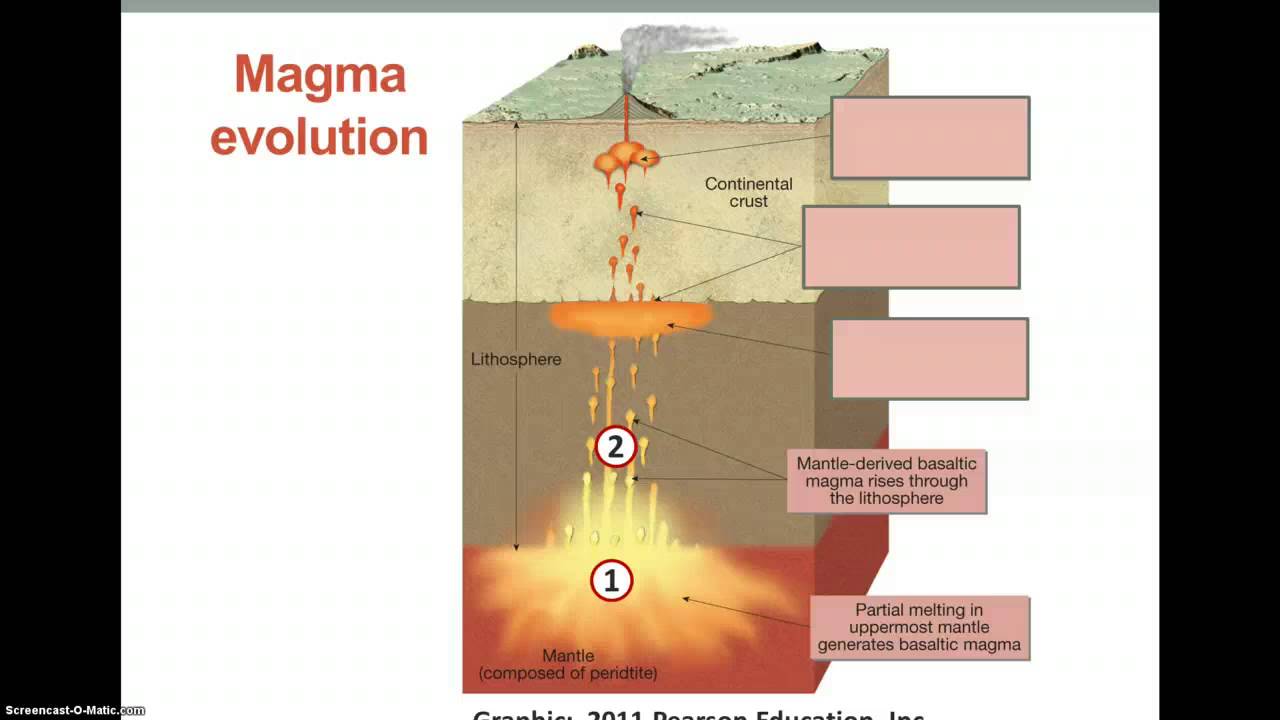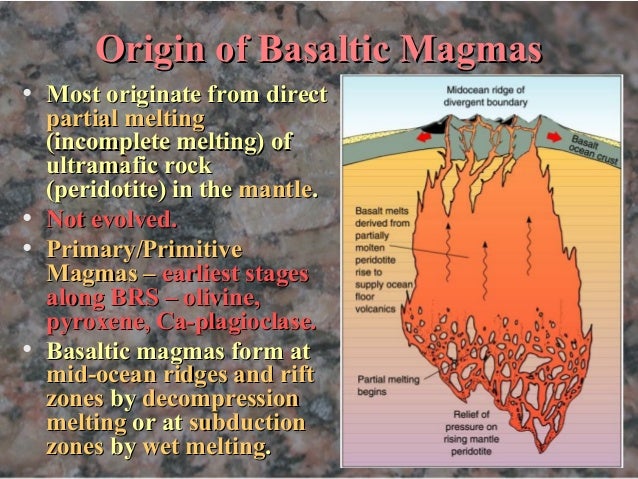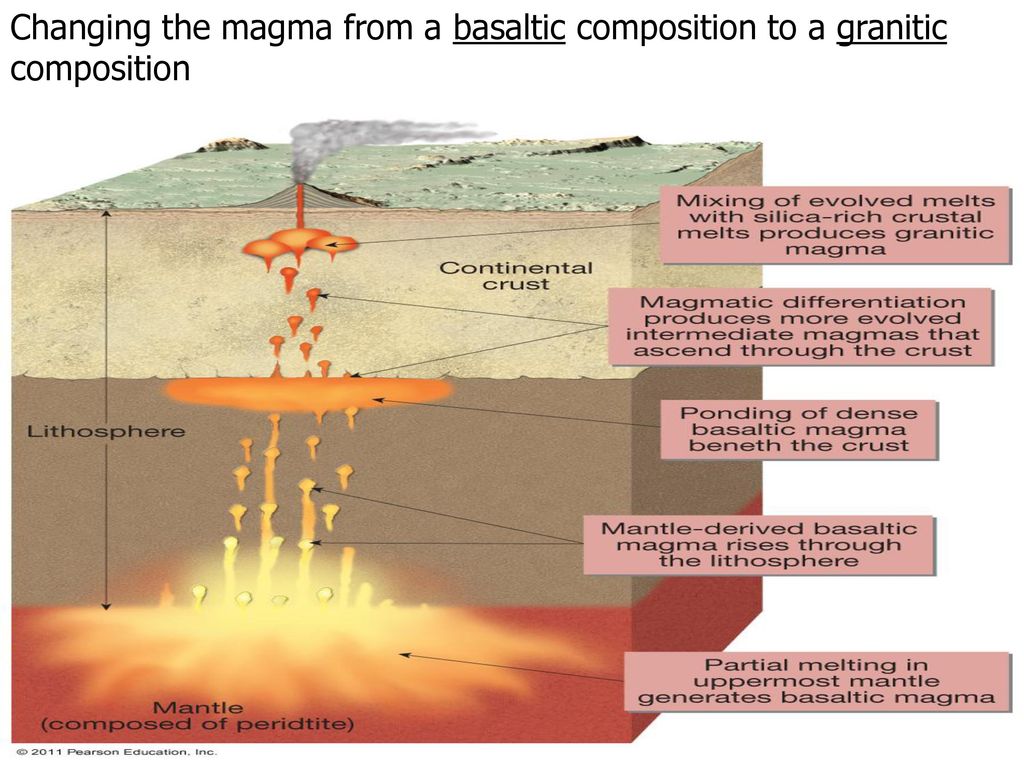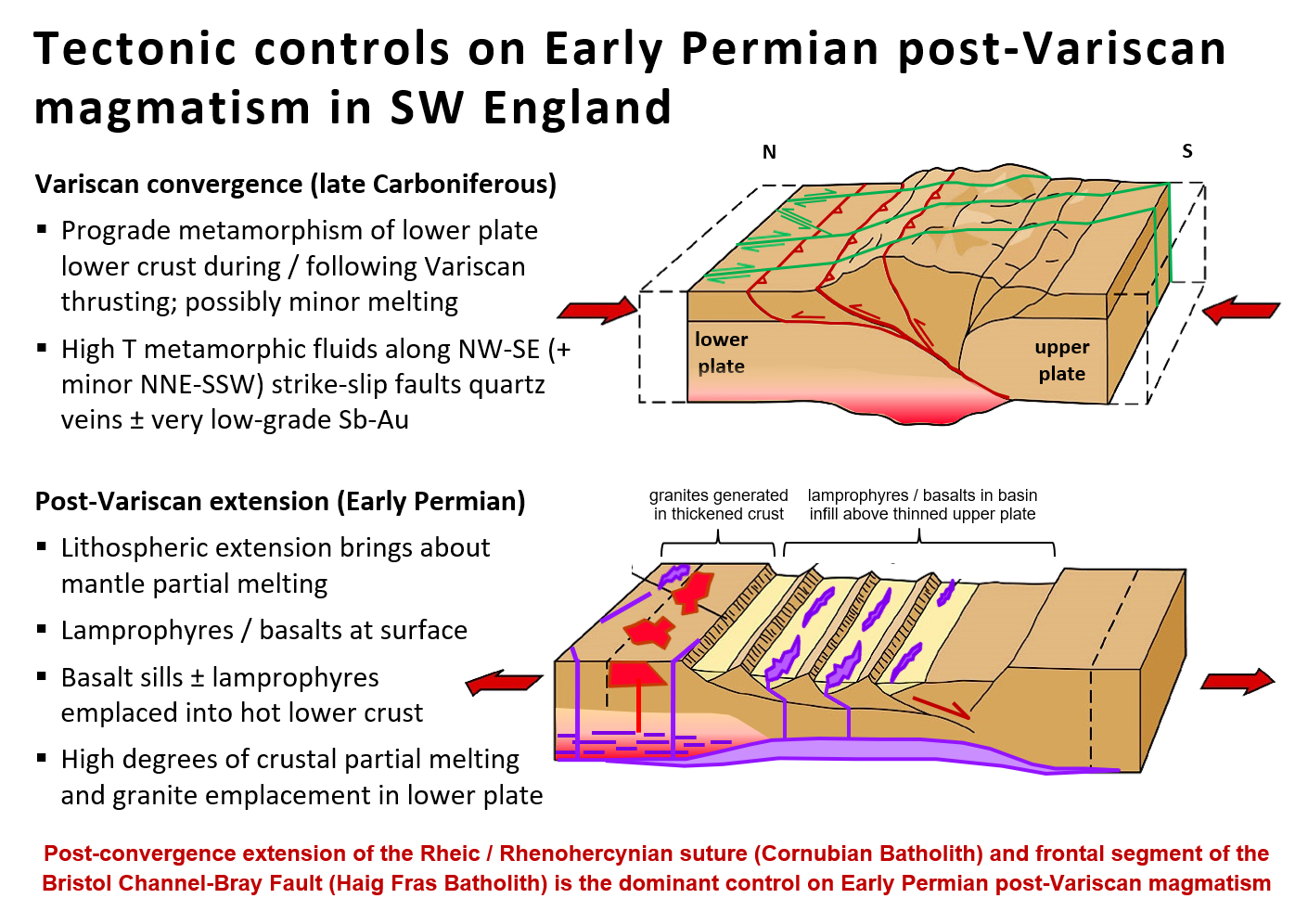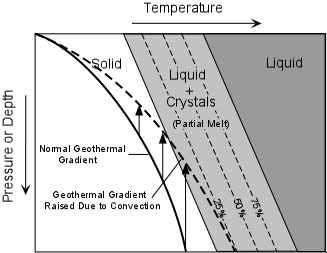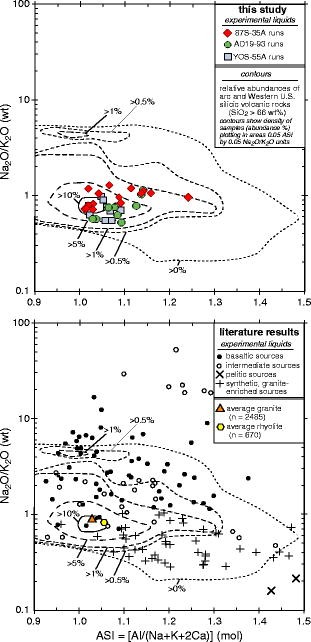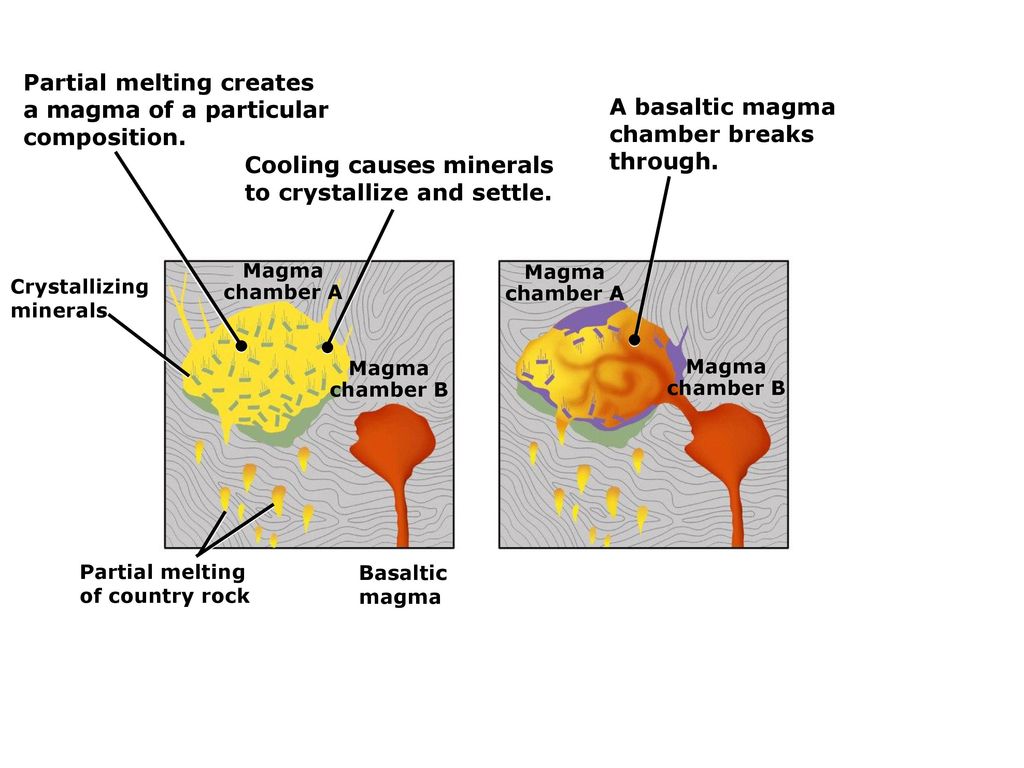Partial Melting Of Granite Generates Basalt Magma

This is generally considered to be caused by the viscosity of the magma which is.
Partial melting of granite generates basalt magma. Bowen an experimental petrologist in the early 1900s realized this from his determinations of simple 2 and 3 component phase diagrams and proposed that if an initial basaltic magma had crystals removed before they could react with the liquid that the common suite of rocks from basalt to rhyolite could be produced. Which yields magma of basaltic composition. Marble granite shale peridotite question 2 1 point what is the predominant rock type making up mid ocean ridge material. Partial melting of what type of mantle rock produces basaltic magma.
Basaltic rocks partially melt to form granitic magma. At the great depths i e pressures of basaltic magma generation in the mantle volatile species such as water h 2 o carbon dioxide co 2 and sulfur species sulfur dioxide so 2 and hydrogen sulfide h 2 s are completely dissolved in the melt. 4 7 describe how partial melting of the mantle rock peridotite generates basaltic mafic magma. A basaltic pond of magma becomes trapped below continental crust and partially melts this silica rich crust into a granitic magma.
Granite diorite basalt quartzite question 3 1 point which of the following plates is moving the fastest. Basaltic partial melting results in a magma that is nearer the end of the compositional spectrum than the parent rock from which it was derived. Granite magmas are generally much more viscous than mafic magmas and are usually more homogeneous in composition. Why does partial melting result in a magma having a composition different from the rock from which it was derived.
A basaltic magma undergoes magmatic differentiation as it slowly moves through the continental crust. The mantle rocks located at depths from about 70 to 200 kilometres are believed to exist at temperatures slightly above their melting point and. As magmas ascend to lower pressures volatile solubility tends to decrease and volatiles. Recall that igneous rocks are composed of a mixture of minerals and therefore tend to melt over a temperature range of at least 200 c nearly 400 f.
A basaltic pond of magma becomes trapped below continental crust and partially melts this silica rich crust into a granitic magma. Partial melting of the ultramafic rock peridotite can generate a n magma. Peridotite partially melts to form granitic magma. The typical magma chamber is formed from a series of injections of melt and magma and most are also subject to some form of partial melt extraction.
Basaltic magmas that form the oceanic crust of earth are generated in the asthenosphere at a depth of about 70 kilometres. Granite is felsic andesite is intermediate. High pressure conditions cause partial melting of the ultramafic rock peridotite.


